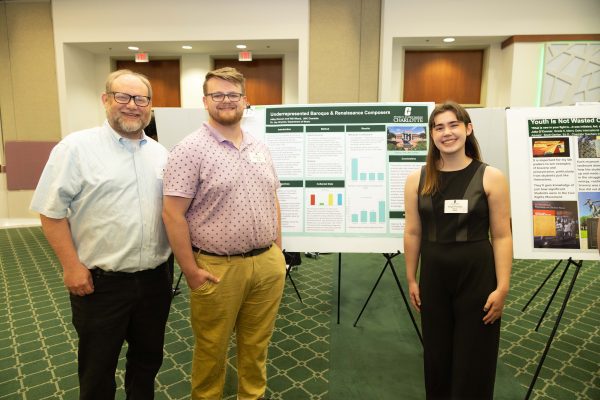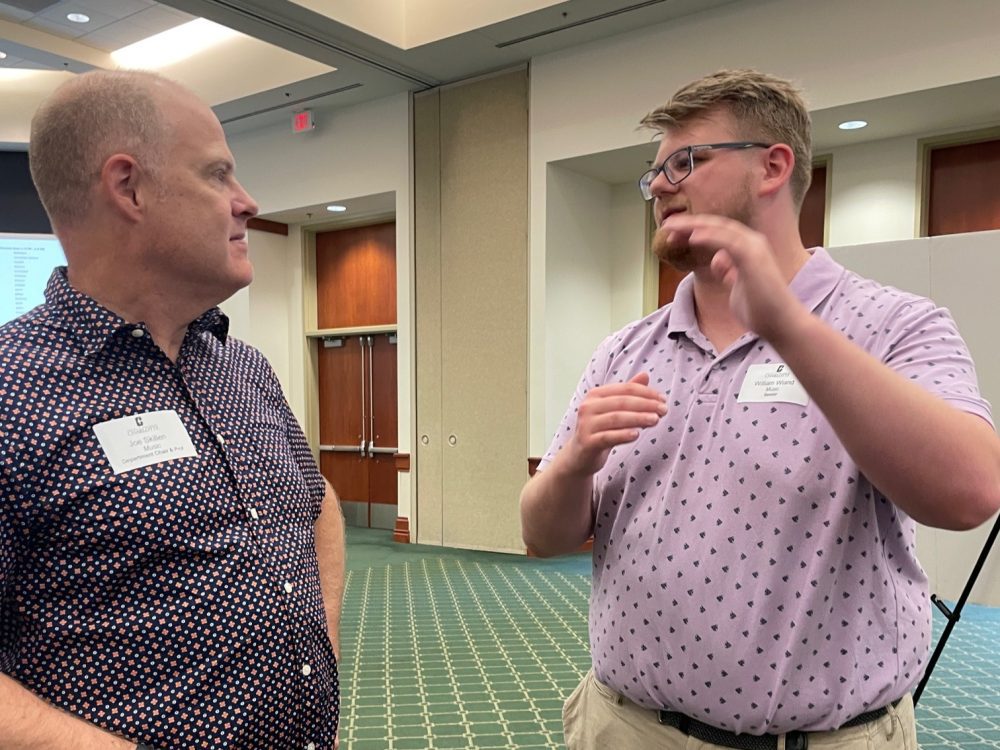Music Students’ Research Brings Unknown Composers to Light

Time burns memory like a wildfire, and from generation to generation, much of the past goes up in smoke. But this summer, two music students have been digging through history’s ashes to uncover composers lost to time.
Under the guidance of Professor of Musicology Jay Grymes, seniors Abigail Roscoe and Will Wiand worked as Office of Undergraduate Research Summer Research Scholars to expand public information about 24 practically unknown composers from the Renaissance and Baroque periods.
Grymes said the research project came out of the music history course, “Western Classical Music: Antiquity-Baroque,” in which he requires students to write about a marginalized composer from the course period.
“Who’s out there that I’ve never heard of?” he wondered.
He and the students scoured musicological resources, such as Grove Music Online, the International Music Score Library Project, and the Choral Public Domain Library, and developed a database of some 500 composers who lived between 1400 and 1750. Most were from Spain/the Iberian Peninsula, and many were women. From that vast list, they chose 24 for whom there were enough available records (including music and recordings) that a student in the music history class would be able to complete a successful assignment.
Encyclopedias like the Grove are subscription only, so in order to advance public access to information, Roscoe and Wiand focused on expanding existing Wikipedia articles on the composers or in some cases creating Wikipedia articles from scratch.
“We’ve revised 17 pages and composed seven new ones,” Wiand said.
The discovery of these unknown musicians has been exciting, he said.
“I find it so amazing that their personal lives, family histories, drama, feuds, and ideologies have been so well preserved for centuries.”
Both students particularly enjoyed learning about women composers – a group grossly underrepresented in repertoire and curricula.
Roscoe, for example, was impressed by Bianca Maria Meda, an Italian nun and vocal music composer in the Baroque period.
“At the time, it was not typical for female composers to have their work published, making her collection of motets a huge achievement,” Roscoe said. “Her work was both complex as well as artistic. What stood out the most, however, was the text of her music. It is written in the feminine first person of a cloistered nun and uses descriptive imagery to highlight themes of spiritual love and desire.”
Wiand was delighted to discover 400-year-old piano music by a girl of 14, Lady Margaret Wemyss, who died in 1649 at the age of 19.
“It shows you that we leave legacies and touch peoples’ lives in very unexpected ways, even centuries after we’re gone,” he said.
The students created Wikipedia articles on Juan de Espinosa, Bertrandus Vaqueras, Alonso Pérez de Alba, Gonzalo de Baena, Antonio de Ribera, Pedro Valenzuela, and Severo De Luca. Now, because of their work, a quick Google search produces those articles, laying the groundwork for further exploration.
“These composers have created a variety of meaningful works,” said Roscoe. “It’s incredibly rewarding to know that you are adding visibility to these composers and inspiring other musicians to learn about their work.”


Abigail Roscoe and Will Wiand present their research at the OUR Summer Research Symposium on July 25. Photos by Amy Hart.